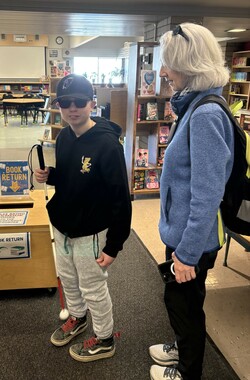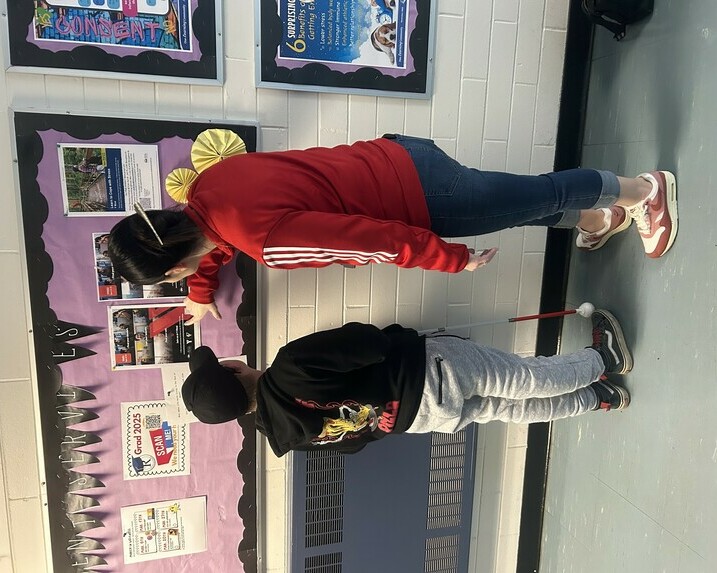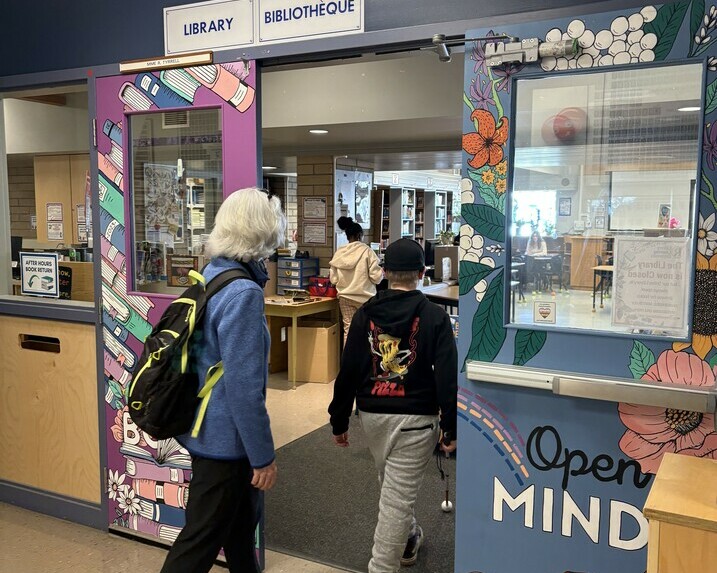O&M Programming
Every student you encounter, whether they have additional disabilities or not, has the right to know where they are in space... regardless of their mobility abilities (McCarthy, 2025, January 28).
Orientation and Mobility (O&M) is one of the nine essential skill areas of the Expanded Core Curriculum for students with visual impairments and blindness, including deafblindness. Students with deafblindness require specialized instruction and strategies that enable them to access the general curriculum and navigate the world (Lewis & Allman, 2014). For students with deafblindness, the BC Inclusive Education Manual (2024) includes O&M as an essential component of a student’s program.
- Orientation: using information that you have gathered through your senses to know where you are presently and where you would like to go. It also involves knowing how you will get to your destination (Weiner, Wall Emerson, & Blasch, 2024).
- Mobility: process of moving from your current location to your destination safely, effectively, and as independently as you are able to (Weiner, Wall Emerson, & Blasch, 2024).
Everyone needs to be able to get around their home, school, and community whether it is finding the bathroom at home, going to the gym at school, or traveling to work or a doctor’s appointment. O&M provides necessary life skills that students with deafblindness need to be active, informed participants in the world around them.
S.A.'s O&M Lesson at the High School

Recently, S.A., a student with deafblindness on Vancouver Island, talked about the importance of O&M. He and his O&M Specialist, M.K., have worked together for eight years. When asked how O&M helps him, S.A. replied, "I am learning how to get around safely." The most important skill he has learned in O&M is to "use my cane side to side and look both ways at the road (corner)."
Since January, S.A. has been having O&M lessons at the high school he will be attending in the fall. S.A. let us know that he is "going to my new high school to get to know it." When his O&M specialist asked about what he has learned so far, S.A. replied that “there is a lot of stuff... it’s busy.” Through further discussion, S.A. and M.K. talked about the crowds and that S.A. has skills to be confident to be in the hallways during bell change.
M.K. shared that she often lets S.A. lead the direction of travel while she walks behind. She uses his assistive listening device to keep in contact with him. To familiarize S.A. with the new environment, they stop frequently to explore signs, doorways, and empty classrooms (when possible). EA-Intervenor L.P. joins on all lessons as she will be with him next year in the new environment.
At the end of the lesson, M.K. asked S.A. to share three things he learned about his new high school that day. S.A. replied with the following quotes:
- I learned about the trophy cases at the high school. There are awards for many sports.
- I found the elevator on the second floor and when we went downstairs, we found the elevator door on the first floor.
- We walked out of the door where I will go to catch the bus at the end of a school day. The bus pulled in and I got on and explored inside.
With three more months of school left, S.A. and his O&M specialist M.K. will be making more trips to the high school to learn about the building and navigating it safely and efficiently. For more photos about S.A.'s O&M lesson with M.K. at the high school in March, see the gallery at the bottom of this page.
Looking for an O&M Specialist in BC?
O&M Instruction can only be taught by a qualified or certified O&M specialist.
It is unprofessional and possibly dangerous for unqualified individuals to provide instruction in O&M to students with deafblindness.
If you have any questions, talk to your O&M specialist or Teacher for Students with Visual Impairments.
If your school or school district needs to contract O&M services for a student with deafblindness, first reach out to your student's Teacher for Students with Visual Impairments (TSVI). The TSVI is familiar with the process for finding a qualified or certified O&M specialist.
If your school or school district does not have a TSVI, reach out to the Provincial Resource Centre for the Visually Impaired for more information about as they may be able to offer you direction on how to find a qualified or certified O&M specialist.
BC Ministry of Education and Child Care. (2024). Inclusive education services: A manual of policies, procedures and guidelines. https://www2.gov.bc.ca/assets/gov/education/administration/kindergarten-to-grade-12/inclusive/inclusive_ed_policy_manual.pdf
Lewis, S. & Allman, C. B., (2014). Learning, development, and children with visual impairments: The evolution of skills. In C. B. Allman & S. Lewis (Eds.), ECC essentials: Teaching the expanded core curriculum to students with visual impairments (pp. 3-14). AFB Press.
PRCVI. (n.d.). Provincial Resource Centre for the Visually Impaired. https://www.prcvi.org/
Wiener, W. R., Wall Emerson, R. S., & Blasch, B. B. (2024). Glossary. In W. R. Wiener, R. S., W. S. Wall Emerson, & B. B. Blasch (Eds.), Foundations of orientation and mobility: History and theory, (4th ed., Vol 1). APH Press.




